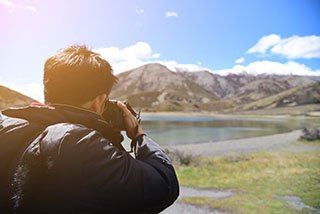Fair dealing and fair use of copyrighted images
 If your book contains images, including those on the front cover, you must ensure you have adequate permission to use them in your publication. Just about everything created by people is intellectual property and copyright laws apply to ensure that creators are reimbursed for uses of their IP.
If your book contains images, including those on the front cover, you must ensure you have adequate permission to use them in your publication. Just about everything created by people is intellectual property and copyright laws apply to ensure that creators are reimbursed for uses of their IP.
There are some cases where you won’t need to pay for or obtain permission to use images. For example, images released under a license such as creative commons or images that are government-owned and therefore in the public domain. Images and writings created by an author who has been deceased for 70 years usually enter the public domain also. Then there are fair dealings and fair uses of images that are still under copyright.
Fair dealing and fair use refer to the use of copyrighted material without permission under specific circumstances (Source). In Australia, there is only the ‘fair dealing’ clause of the Australian Copyright Act 1968, whereas US Copyright laws incorporate the ‘fair use’ element (Source).
Determining fair dealing is complex and unique to each specific case. It can refer to the use of images for reporting news, research and educational purposes, critiques or reviews, and parodies and satires (Source). At PMBO, we can provide you with information on image use, fair dealing and copyright through our Publishing Consultancy service, however, if you have any legal concerns about your writing or your book it may be best to seek out an IP lawyer. If in doubt, leave it out.
Fair dealing or fair use may be relevant to you if your book deals with any matters for which you could not possibly gain permission to use certain images, but you are critiquing something shown in the images. If the owner of the copyright cannot be found, permission is not forthcoming, rights are not for sale, and you are using the image for the purposes of reporting news, research and educational purposes, critiques or reviews, and parodies and satires it may be a ‘fair use’.
 If you could have gained and/or paid for permission to use the image, however, any reasonable person (including those in a court of law) would ask why not do so? If it is understood to be simply to avoid paying, to make commercial gains or to publish your work on the sly, neither ‘fair dealing’ nor ‘fair use’ will be a good defence. An example of where it might be relevant to rely on the fair use defence is if your book is a critique of item A then the curators of item A might refuse to grant you permission to pay for the use of images of their item—images they own the copyright for. Then it would be fair to consider that you needed to use them for the critique but obtaining permission was impossible because of what you were writing about item A.
If you could have gained and/or paid for permission to use the image, however, any reasonable person (including those in a court of law) would ask why not do so? If it is understood to be simply to avoid paying, to make commercial gains or to publish your work on the sly, neither ‘fair dealing’ nor ‘fair use’ will be a good defence. An example of where it might be relevant to rely on the fair use defence is if your book is a critique of item A then the curators of item A might refuse to grant you permission to pay for the use of images of their item—images they own the copyright for. Then it would be fair to consider that you needed to use them for the critique but obtaining permission was impossible because of what you were writing about item A.
Assuming you must have the image of item A in order to make your critique of it, and you are unable to get an image of the item any other way than by taking one that is under copyright and publishing it, then the curators might not have any grounds to sue you for copyright infringement. You would still need to acknowledge the author and title of the work, in this case the photographer of the item.
For information about what you can use without permission, please refer the Australian Copyright Council or the Copyright Agency Limited.